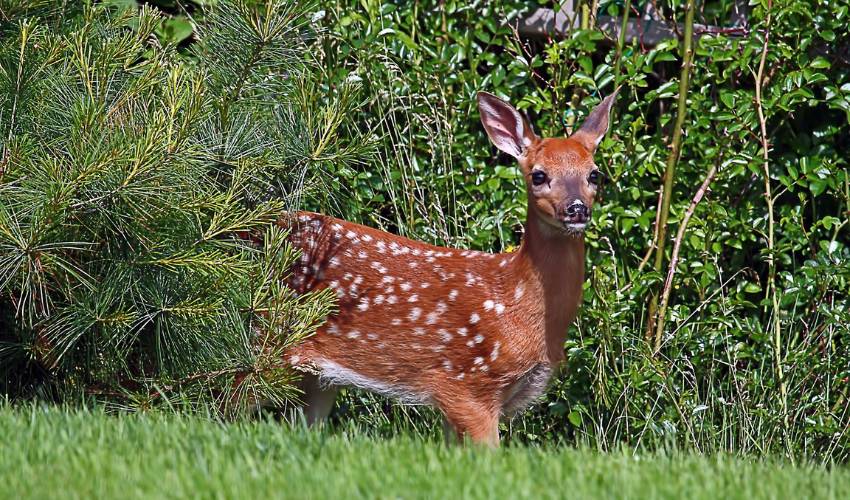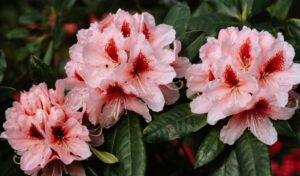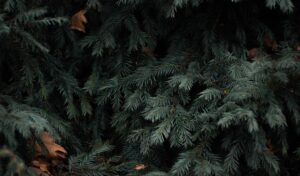
Deer can be a beautiful sight in the wild, but when they start wreaking havoc in your Hudson Valley, New York, garden, or eating your crops, New York State’s over 1.2 million deer can quickly become a nuisance. That’s where deer repellent spray comes in. These products claim to deter deer from entering your property and causing damage.
But do they actually work? In this article, we will delve into the world of deer sprays, exploring their effectiveness as deterrents and considering alternative solutions to keep those pesky deer at bay.
Takeaways from the Article
- Deer repellent sprays can be effective deterrents for preventing damage to gardens, crops, and ornamental plants caused by deer.
- There are two main types of deer repellent sprays: natural sprays made from organic ingredients and chemical sprays containing synthetic compounds.
- Proper application and regular reapplication of deer sprays are important for maximum effectiveness.
- Alternatives to deer sprays include fencing, motion-activated sprinklers, noise deterrents, scent repellents, and incorporating plants that deer dislike in the garden.

The abundance of deer in the Hudson Valley region of New York makes them a common winter pest.
Deer Behavior and the Damage They Cause
Understanding deer behavior and damage is essential in determining the effectiveness of deer sprays. Deer are herbivores that primarily feed on leaves, twigs, fruits, and nuts. They can cause significant damage to gardens, crops, and ornamental plants, especially during the winter months when food is scarce.
Deer are known to be abundant, persistent, and adaptable creatures, capable of jumping over high fences and even squeezing through narrow gaps. They are also creatures of habit, tending to revisit the same feeding areas repeatedly.
To effectively deter deer, it is important to understand their behavior and preferences. Deer are most active during dawn and dusk, making these times ideal for applying deer repellent sprays.
These sprays are formulated to target deer’s sense of smell and taste, deterring them from approaching treated areas. They often contain ingredients such as garlic, eggs, hot pepper, and predator urine, which emit strong odors that deer find unpleasant.
However, the effectiveness of deer sprays can vary depending on various factors. One key factor is the availability of alternative food sources. If deer are desperate for food, they may be more willing to tolerate the unpleasant scents of the sprays. Additionally, individual deer may have different preferences and tolerances, making it difficult to guarantee complete deterrence.
Moreover, deer sprays may need to be reapplied regularly, especially after rainfall or heavy watering, as they can be washed away or diluted. It is also important to follow the instructions provided by the manufacturer to ensure proper application and maximize effectiveness.
Understanding deer behavior and damage is crucial in evaluating the effectiveness of deer repellent sprays. While these sprays can be effective deterrents, their success may vary depending on factors such as food availability and individual deer preferences. Regular reapplication and proper usage are also important for optimal results.

Even young deer like this fawn can have a negative impact on your trees and shrubs.
Different Types of Deer Repellent Spray
Exploring the various types of deer sprays reveals their potential as powerful deterrents. Deer sprays are designed to repel deer and prevent them from damaging plants, crops, and landscapes. They can be categorized into two main types: natural and chemical sprays.
Natural deer sprays are made from organic ingredients such as garlic, rotten eggs, hot peppers, and predator urine. These sprays work by emitting strong odors and tastes that deer find unpleasant. The theory is that deer will associate the smell with danger and avoid the area. Natural sprays are generally considered safe for the environment and can be applied directly to plants or surrounding areas. However, their effectiveness can vary depending on the concentration of active ingredients and the specific deer population in the area.
On the other hand, chemical deer repellent spray contain synthetic compounds such as ammonium salts or aluminum sulfate. These sprays work by creating a bitter taste on plants that deer find unappetizing. They can also have a repellent effect due to their strong scent. Chemical sprays are often more potent and longer lasting than natural sprays, but they may pose risks to the environment and require careful application to avoid harming beneficial insects or pollinators.
It is important to note that no deer spray is 100% effective, as deer behavior can be unpredictable, and their tolerance to certain scents or tastes can vary. Additionally, deer may become accustomed to the spray over time, reducing its effectiveness. Therefore, it is recommended to rotate between different types of sprays or use multiple deterrent methods to maximize effectiveness.
Exploring the different types of deer sprays can help individuals find suitable options for deterring deer damage. Whether using natural or chemical sprays, it is essential to follow the instructions carefully and consider the potential environmental impact. Additionally, combining sprays with other deer deterrent methods, such as fencing or noise devices, can further enhance their effectiveness in protecting plants and landscapes from deer.
Application and Effectiveness of Deer Repellent Spray
To effectively use deer sprays, make sure to carefully follow the application instructions and consider the specific needs of your plants and landscape. Deer sprays are typically applied directly onto the foliage of plants that are being targeted by deer.
It is important to apply the spray evenly and thoroughly, covering all parts of the plant that deer are likely to feed on. Some sprays may require dilution with water, so be sure to read the instructions carefully before use.
In terms of effectiveness, deer sprays can be quite successful in deterring deer from your plants. Many sprays use ingredients such as garlic, rotten eggs, or predator urine, which give off strong odors that deer find unpleasant. These odors can effectively repel deer and discourage them from feeding on your plants. Some sprays also contain substances that create a bitter taste on the foliage, further deterring deer from eating the plants.
However, it is important to note that the effectiveness of deer sprays can vary depending on several factors. The taste and odor preferences of deer can differ among individuals and populations, so what works for one deer may not work for another.
Additionally, deer may become accustomed to the smell or taste of a particular spray over time, reducing its effectiveness. Therefore, it is recommended to rotate between different types of sprays to keep the deer from adapting.
Deer sprays can be effective deterrents when used correctly. By carefully following the application instructions and considering the specific needs of your plants and landscape, you can increase the chances of successfully repelling deer from your garden.
However, it is important to remember that no method is foolproof, and a combination of strategies may be necessary for optimal deer control.

This doe is happily munching on your trees!
Alternatives to Deer Repellent Sprays
There are other options available for deterring deer from your plants aside from using sprays. These alternatives can be just as effective in keeping these animals away from your garden and landscaping. Here are five alternatives to deer sprays that you can consider:
- Fencing: Installing a sturdy fence around your property can be an effective way to keep deer out. Choose a fence that is at least 8 feet tall and bury it at least 12 inches deep to prevent deer from jumping over or digging under it.
- Wrapping: As Mentioned in our Winter Care Checklist, wrapping also prevents deer browsing by putting a non-edible, physical barrier between your plants and the hungry deer.
- Motion-activated sprinklers: These devices use infrared sensors to detect the movement of deer and spray water in their direction. The sudden burst of water startles the deer and makes them retreat.
- Noise deterrents: Deer are easily startled by loud noises. You can use noise deterrents such as wind chimes, bells, or even a radio playing at a high volume to keep them away from your plants.
- Scent repellents: Deer have a keen sense of smell, and certain scents can repel them. You can use strong-smelling substances like garlic, rotten eggs, or predator urine around your garden to deter deer.
- Plants that deer dislike: There are certain plants that deer find unappealing. By incorporating these into your landscaping, you can make your garden less attractive to deer. Some examples include yarrow, lavender, daffodils, and marigolds.
By exploring these alternatives to deer sprays, you can find a method that works best for you and your garden. Remember to consider your specific needs, budget, and the severity of the deer problem in your area when choosing the most suitable deterrent.
Frequently Asked Questions About Deer Sprays
How long does it take for deer sprays to start showing results?
Deer sprays typically start showing results within a few days of application. They are effective in deterring deer from entering certain areas, such as gardens or yards. The active ingredients in these sprays emit scents that deer find unpleasant, causing them to avoid the treated areas.
However, it is important to note that effectiveness may vary depending on the specific brand and the behavior of the deer population in the area.
Are deer sprays safe to use around children and pets?
Deer sprays are a popular method to keep deer away from gardens and plants. However, when it comes to using these sprays around children and pets, caution is necessary.
While some deer sprays are considered safe, others may contain chemicals that could be harmful if ingested or inhaled. It is recommended to carefully read the instructions and labels of the specific deer spray product to ensure the safety of children and pets in the surrounding area.
Can deer sprays be used on all types of plants?
Deer sprays can be used on a variety of plants to deter deer from eating them. These sprays contain ingredients that emit a scent that deer find unpleasant, causing them to stay away.
However, it is important to read the instructions on the specific spray to ensure it is safe for all plants. Some sprays may be more suitable for certain types of plants than others.
It is best to consult the product label or a gardening professional for guidance.
Do deer sprays have any negative impact on the environment?
Deer sprays can have negative impacts on the environment. These sprays often contain chemicals that may be harmful to other animals, insects, and plants. Additionally, if the sprays are not used properly, they can contaminate soil, water sources, and air.
It is important to carefully consider the environmental implications before using deer sprays and to explore alternative methods of deterring deer that have a lesser impact on the ecosystem.
Are there any specific instructions to follow while applying deer sprays?
There are specific instructions to follow while applying deer sprays. It is important to read and follow the instructions provided by the manufacturer.
Generally, the spray should be applied evenly and directly onto the plants or areas that need protection. It is recommended to reapply the spray after rain or as directed on the product label.
Following these instructions can help maximize the effectiveness of deer sprays in deterring deer and protecting plants.
Wrapping It Up
Deer sprays can be effective deterrents against deer damage. By understanding deer behavior and using the right type of spray, homeowners can protect their gardens and landscapes from these animals.
However, it’s important to note that the effectiveness of deer sprays may vary depending on factors such as weather conditions and the persistence of deer.
For those who prefer alternative methods, there are other options available, such as fencing or planting deer-resistant plants.
Ultimately, finding the right solution depends on individual circumstances and preferences.
Are Deer Eating Your Trees, Shrubs, and Plants?
Call Hill Treekeepers today at 914-214-7045 for an arborist consultation. Our experts can assess your situation and recommend the best course of action to protect your trees! We’re the Hudson Valley, New York region’s tree care experts!
Share this online!
Get the highest quality of tree services for residential and commercial properties in the Hudson Valley area. We look forward to working with you!
TOPICS
Recent Articles
Don't Miss the Next Update!
Join the thousands of smart Hudson Valley residents who get the monthly newsletter from Hill Treekeepers. It's full of helpful information you won't want to miss!






